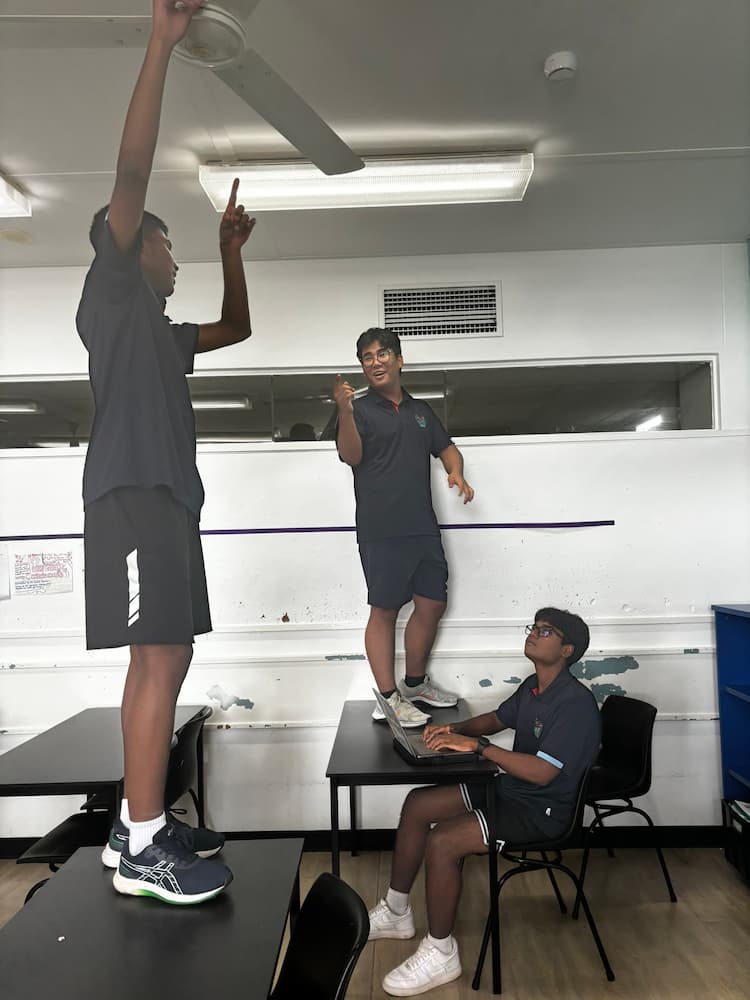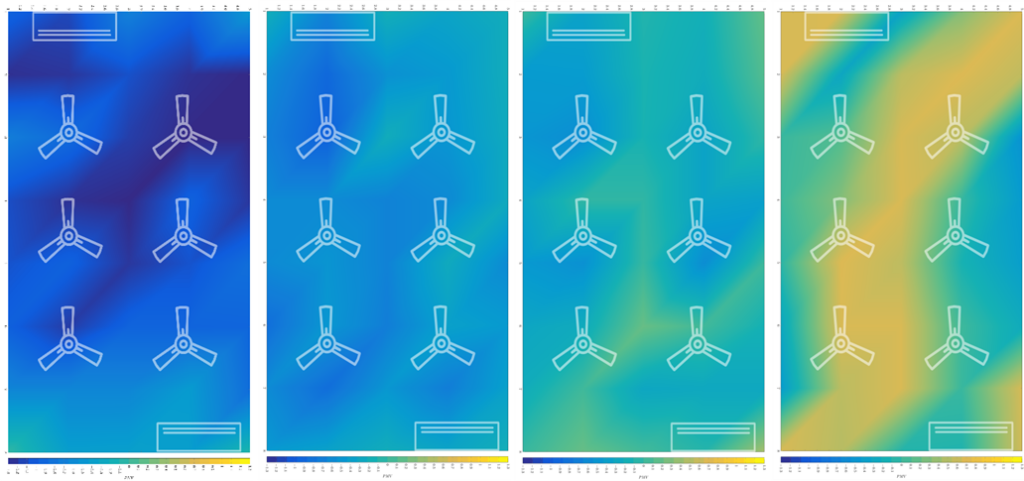Pothik Vincent Mondol, Monishi Rangchak Tripura, and Mohammad Niyaz Hasan have completed a project that could significantly reduce energy use and emissions in Australian classrooms. Now, having already won an award at the Australian Science and Engineering Fair (AUSSEF), the three Year 12 students from Darwin High School need to raise $30,000 to attend the Regeneron International Science and Engineering Fair (ISEF) in Los Angeles from May 11–17, 2024.
AUSSEF Fair Director Stuart Garth shares results of the project with HVAC&R News.
Living in the sweltering heat and humidity of Darwin, the three students spent four months looking at ways of increasing the sustainability of their high school. They did this by investigating whether ceiling fans used in tandem with air conditioning units could lead to better cooling outcomes that used less electricity. The trio successfully minimised the energy consumption of a classroom by increasing the ceiling fan speed and running the more energy-intensive air conditioners at a higher temperature.
Methodology
With classroom air conditioning being centrally controlled at Darwin High School, the team used two demountable classrooms at Good Shepherd Lutheran College to perform their major experiment. Using TWL-1S thermal sensors, on loan from the CSIRO, they took temperature and windspeed measurements at 1m increments across the width (five locations) and length (eight locations) of the classroom, making a total of 40 measurements for each trial.
They performed different trial iterations for integral air conditioner settings between 24–29°C and different fan speeds. Each measurement was at a set height from the ground and the experiment, with all its temperature and windspeed permutations, was repeated twice more, then replicated in the second classroom.

Mapping “feels like” data
The students then generated contour maps of the predicted mean vote (PMV), which showed the predicted measure of what ambient conditions would be perceived to be comfortable for people. In accordance with ANSI/ASHRAE Standard 55, PMV or “feels-like heat index” calculations were made using the average wind speed and globe temperature measurements taken at each data point for each trial iteration, as well as factors including the dry ambient temperature, relative humidity, and the metabolic rates of individuals. The results for each triplicate trial were similar, as were the results from the two different demountable classrooms.
Optimising thermal settings
Optimal thermal conditions occur when the average PMV value for the room is closest to zero, as indicated by teal in the contour diagrams. This occurred with air conditioning at 28°C and the fans on their highest setting. This is a much more energy-efficient arrangement than the typical 22–24°C air conditioning settings used in most classroom and commercial settings.

Real-world applicability
The Darwin students’ project has already been recognised at an international student science fair, held in Brisbane. It won the “real-world applicability” award for combatting the world’s energy and greenhouse gas crisis.
Their optimised settings in a demountable classroom save over $310 and 992kg of CO2 emissions annually per classroom. With a large percentage of demountable classrooms in remote and very remote Northern Territory schools and a total of 16,000 demountable classrooms Australia-wide, the potential energy expenditure savings and carbon emission reductions of their findings are quite significant.
“The work behind this project has taught me more than just science, it has taught me to persevere in the face of challenges and to enjoy myself when those little discoveries are made,” Tripura says.
Most importantly, this project has made me realise the work we do at school can have an impact on the world.
“From coming up with an insane idea at 2am on a school night to presenting this idea at an International Student Science Fair and winning the Real-World Application Award, we believe our research is groundbreaking in this field.”
The biggest challenge
Despite being selected as one of the top nine school STEM projects in the Australian Science and Engineering Fair (AUSSEF), the students need sponsorship of $10,000 each to attend this once-in-a-lifetime ISEF event.
Sponsorships from two research institutions, two building companies and an international engagement grant from the Australian government has so far covered the expenses of four other ISEF student projects and two chaperones. However, AUSSEF still needs funding to cover the expenses of the remaining five student projects, including $30,000 for these three Northern Territory students. If this $30,000 funding is not realised by the end of March, these students will not be able to attend.
You can contact the AUSSEF Coordinator Stuart Garth at [email protected] if you or your company are able to support these amazing students. You could sponsor the whole team, one team member, or make a partial contribution to their cause. Alternatively, you can make a tax-deductible donation directly to AUSSEF.
If you’re impressed by what Mohammad, Monishi, and Pothik have achieved, voice your support for them in the comment section below!



Leave a Reply